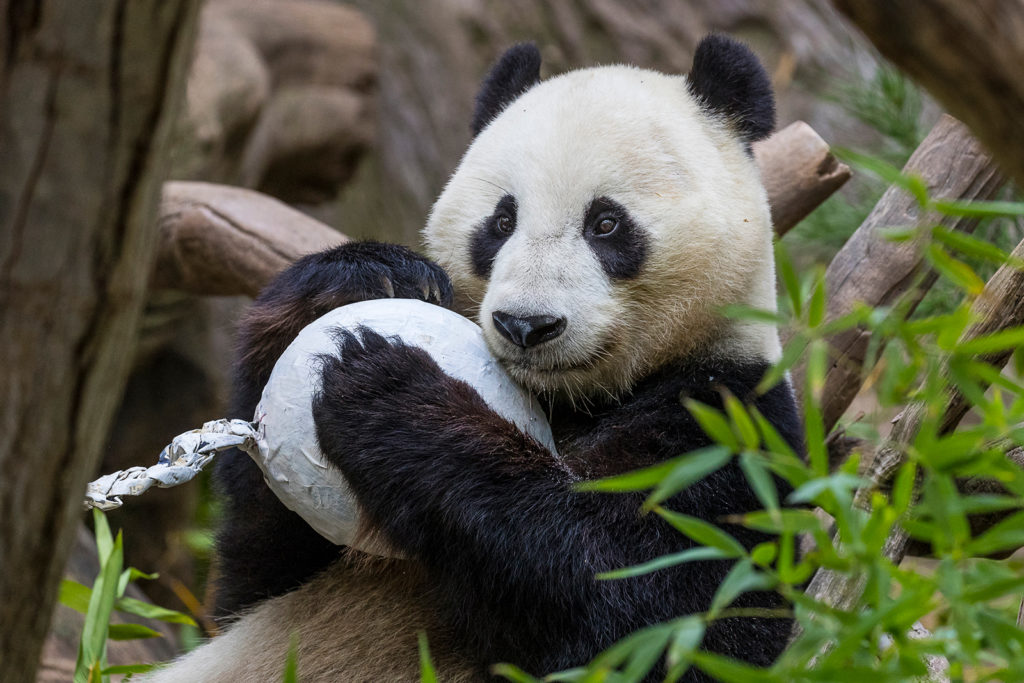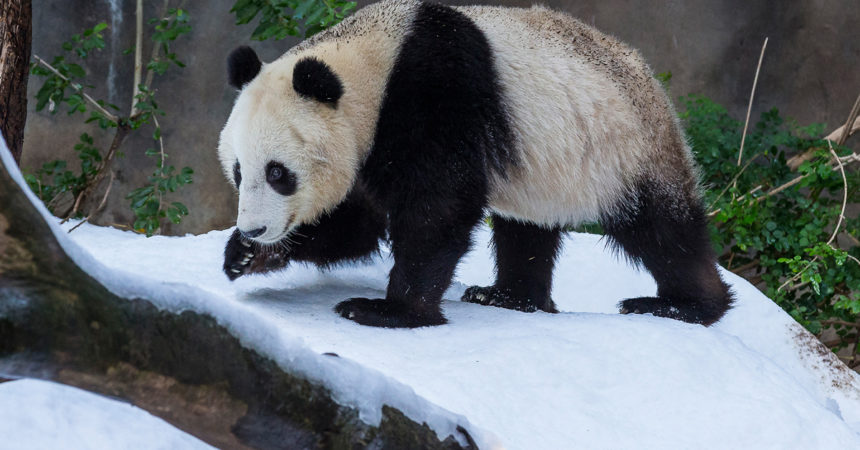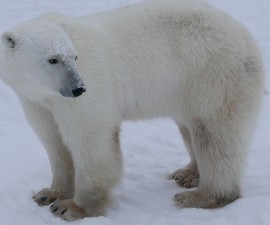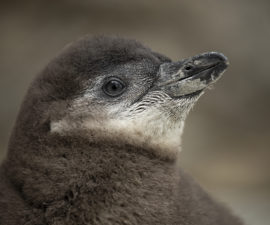The San Diego Zoo’s giant panda conservation program was awarded a first-of-its-kind certificate of appreciation from the China Conservation and Research Center for the Giant Panda (CCRCGP), for “significant contribution to giant panda conservation.” The San Diego Zoo is the first U.S. based conservation organization to receive this honor.
“We value our friendship with Chinese conservationists and are proud of everything we have been able to accomplish together,” said Douglas G. Myers, president/CEO, San Diego Zoo Global. “We understand what a tremendous honor it is for the San Diego Zoo to be chosen for this award, and we look forward to continuing our collaboration into the future.”
Decades ago, when the San Diego Zoo-based collaborative panda program began, the species was on the verge of extinction. The Zoo became part of an international collaboration that included the CCRCGP, the China Wildlife Conservation Association (CWCA), the U.S. Fish and Wildlife Service, and other accredited zoos and conservation organizations, in an unprecedented international effort to prevent a panda extinction event. The Zoo’s work at the forefront of the fight to save the giant panda, including breeding a significant number of giant panda cubs, supporting Chinese in situ conservation efforts, sharing vital technology, and training Chinese conservationists in important management and veterinary techniques were cited as reasons for the award.

“Receiving recognition for our giant panda work from the organization and the people who know and care for giant pandas more than anyone in the world has tremendous significance,” said Carmi Penny, director of Collections Husbandry Science at the San Diego Zoo. “We know that Bai Yun and Xiao Liwu are home, and we are deeply gratified to know that the San Diego Zoo made a difference.”
The San Diego Zoo is globally recognized and a San Diego icon, hosting more than 4 million guests each year. At the San Diego Zoo, visitors can watch penguins and sharks swim, observe the behavior of century-old Galápagos tortoises, enjoy the beauty of exotic orchids, marvel at koalas, explore walk-through aviaries filled with the songs and colors of rare birds, and appreciate the power of leopards and jaguars. The San Diego Zoo is also accredited by the American Association of Museums as a Botanical Garden. As visitors discover the rare and endangered species at the San Diego Zoo, they are directly contributing, through admission and on-grounds sales, to the efforts of San Diego Zoo Global, an international nonprofit conservation organization that works to fight extinction through recovery efforts for plants and animals worldwide. To learn more, visit sandiegozoo.org, or connect with us on Facebook, Twitter, Instagram or YouTube.





